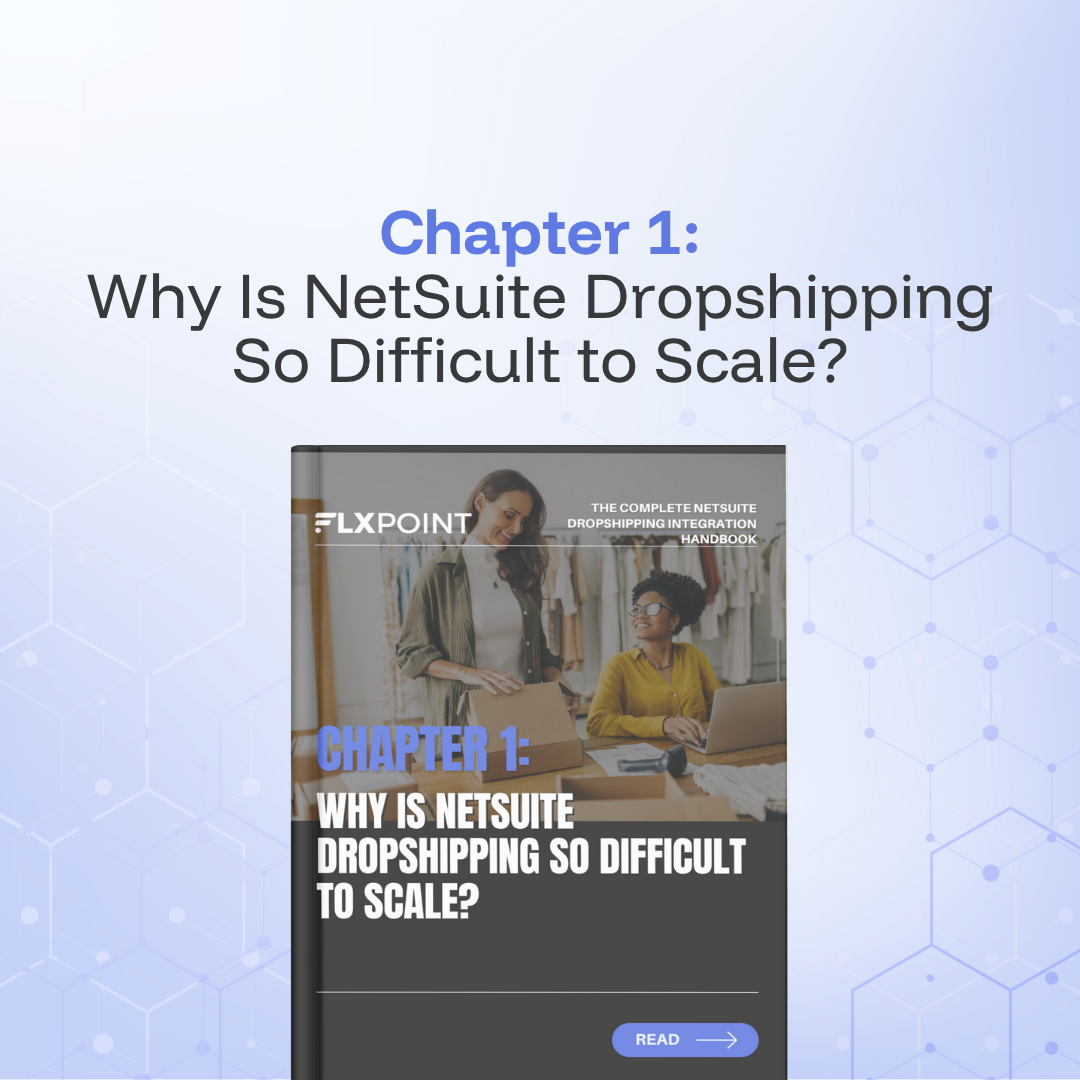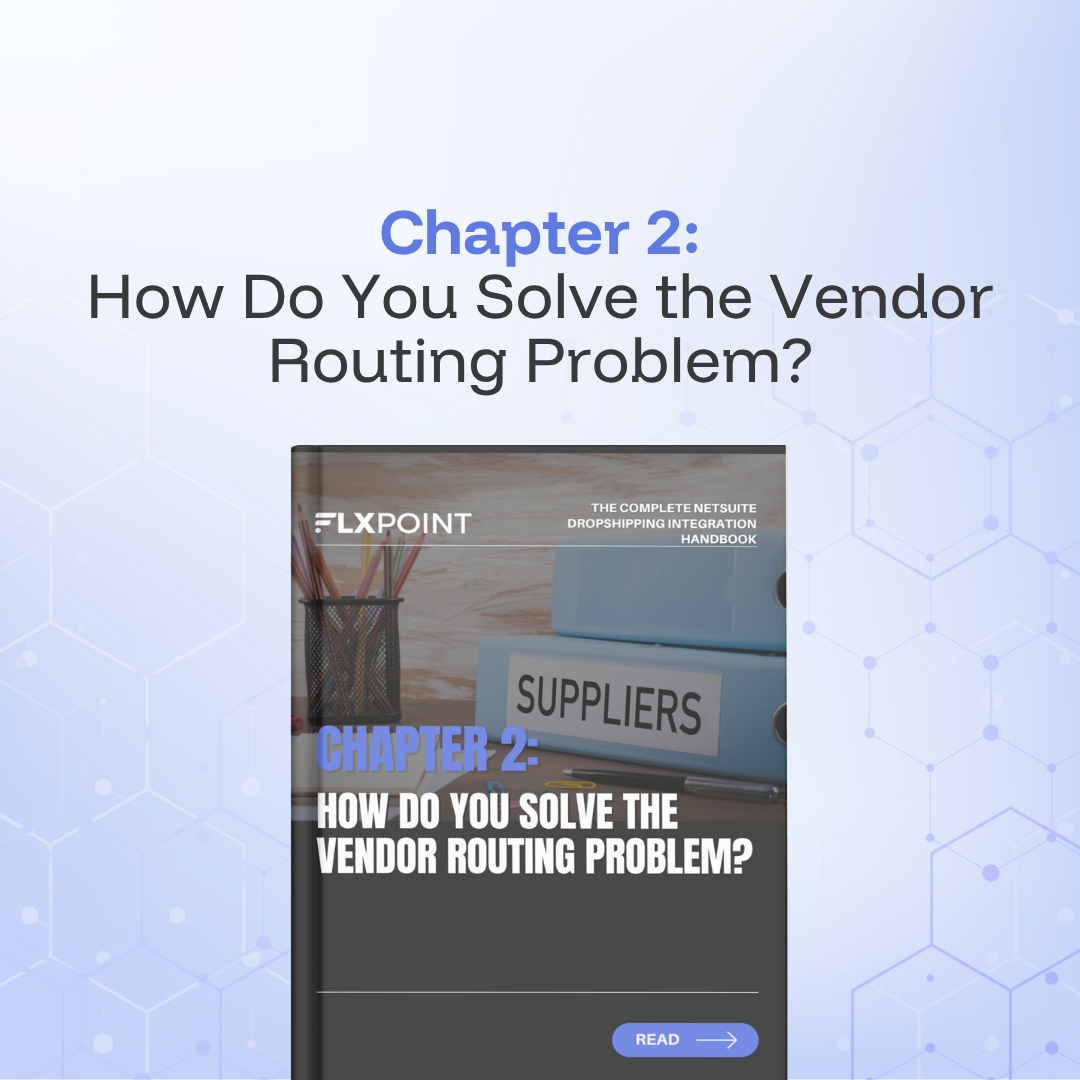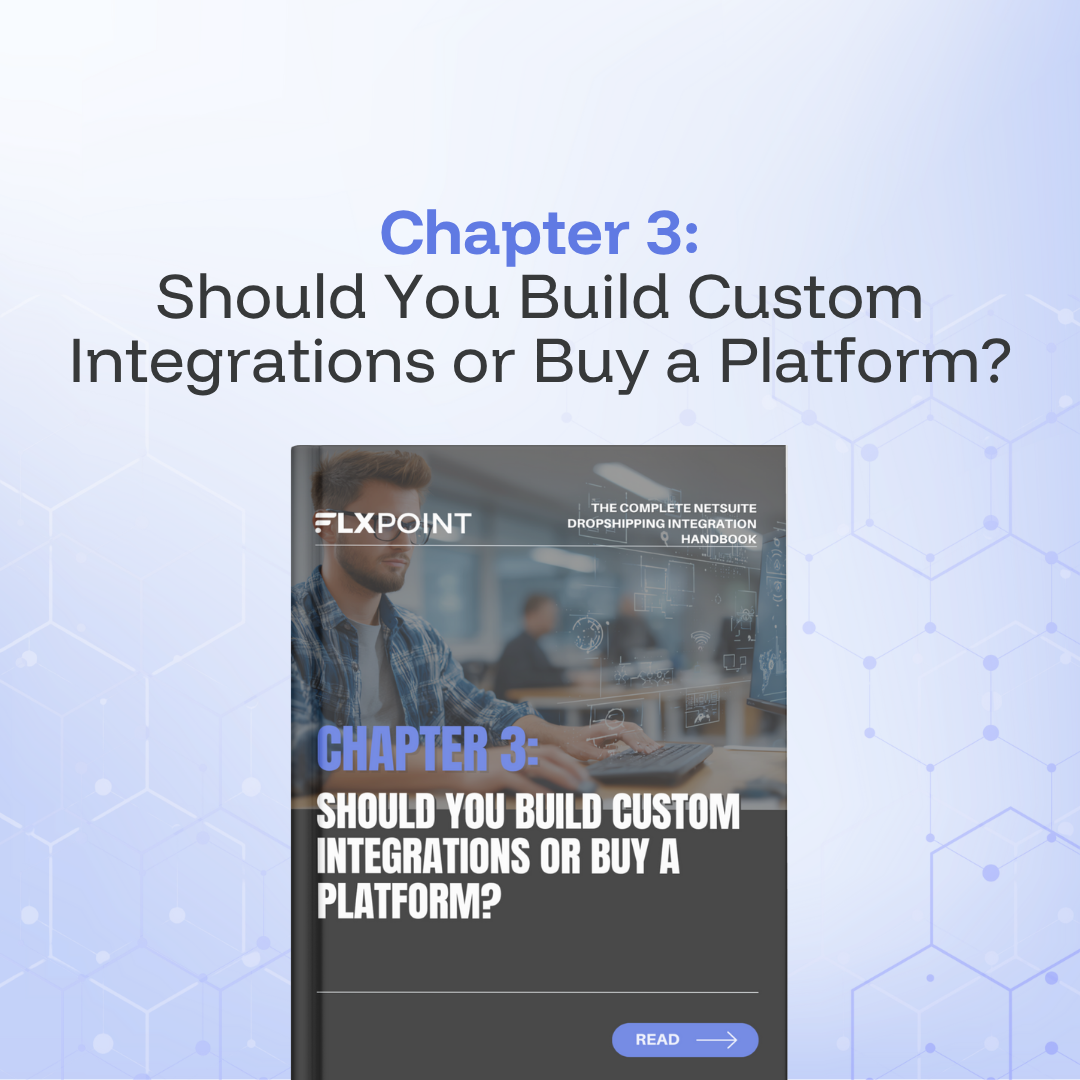Chapter 1 Why Is NetSuite Dropshipping So Difficult to Scale?

Understanding the Core Challenges
If you're reading this, you've probably felt the pain. Your business wants to scale with dropshipping, but NetSuite wasn't exactly built with high-volume dropship in mind. Let me break down what's really going on.
Traditional retail is straightforward; you buy inventory, store it, sell it, ship it. Dropshipping flips this model. You're now managing hundreds or thousands of SKUs you don't physically touch. Multiple vendors fulfill orders. Each vendor has different rules, different systems, different ways of doing business.
NetSuite is powerful, but it requires heavy lifting to handle dropship at scale. The biggest headaches? Creating thousands of item records manually. Managing vendors who carry the same products. Getting orders to the right vendor automatically. Keeping track of shipments and invoices across multiple partners.
Here's what typically happens: You onboard a new dropship vendor. They send you a catalog with 5,000 SKUs. You need to create item records in NetSuite for each one. That's 5 to 15 minutes per item if you're doing it right. Do the math; you're looking at weeks of work just for data entry.
The three pillars where NetSuite struggles
NetSuite's dropshipping challenges fall into three main areas: item record creation, purchase order generation, and the order fulfillment lifecycle. Let's break down each one.
Item Record Creation
Your vendor sends you a spreadsheet with 10,000 SKUs. They can dropship all of them. Should you create 10,000 item records in NetSuite?
Of course not. Many of those items won't fit your brand, won't meet your quality standards, or simply won't sell. But NetSuite doesn't give you a way to preview and filter vendor inventory before you commit to creating those records.
You're forced to either create item records blindly or manually review thousands of SKUs in spreadsheets before deciding what to add. Neither option scales well. The first creates a bloated NetSuite instance full of items you'll never sell. The second consumes massive amounts of time and still leaves room for errors.
Configuration complexity
When you create an item record for dropshipping, you're not just entering a SKU and description. You need to configure specific fields that NetSuite requires for dropship operations.
First, you must enable the dropship feature in your NetSuite account. Then, for every single item record, you need to check the "Drop Ship Item" box. If you skip this step, NetSuite won't handle the item correctly for dropship fulfillment, leading to inventory and accounting errors down the line.
You also need to designate at least one "Preferred Vendor" for each item. This tells NetSuite which vendor can fulfill orders for this product. If multiple vendors carry the same item, you'll need to add all of them to the item record and mark which one is preferred.
Then there's the question of whether an item should be marked as "Special Order" instead of or in addition to "Drop Ship Item." Special orders involve cross-docking; bringing items into your warehouse briefly before shipping to customers; while drop ship items go directly from vendor to customer. This distinction affects your inventory accounting, cost of goods sold, and general ledger entries.
Error-prone at scale
Creating item records can take five to 15 minutes each when you factor in all the required fields. Multiply that by hundreds or thousands of SKUs, and you're looking at weeks of work. Even with CSV bulk uploads, the process remains tedious and prone to mistakes.
What happens when someone forgets to check the "Drop Ship Item" box? Or accidentally sets the wrong preferred vendor? These small errors create big downstream problems. Orders get routed incorrectly. Purchase orders go to the wrong vendor. Your accounting gets messy because NetSuite expected the item to behave one way, but it's configured differently.
Unlike traditional retail where you might create a few dozen item records per month, dropshipping can require hundreds of new records weekly as vendors add products or you onboard new supplier relationships. The manual approach simply doesn't scale.
Where Does NetSuite's Native Dropship Process Break Down?
The preferred vendor limitation
NetSuite's biggest limitation for dropshipping centers on one feature: preferred vendor routing. When you enable NetSuite's native dropship functionality, you can turn on automatic purchase order creation. Sounds great, right?
NetSuite will only create purchase orders for the preferred vendor you've designated on each item record. That's it. One vendor per item, chosen in advance, with no ability to change based on real-time business conditions.
This rigid system ignores the reality of modern dropshipping. You likely have multiple vendors who carry the same items. Vendor A might normally be your go-to, but today they're out of stock. Vendor B has it available but charges more. Vendor C has the best price but slow shipping times.
NetSuite's preferred vendor logic can't evaluate these factors. It blindly sends orders to whoever you marked as "preferred" months ago, regardless of current inventory levels, pricing changes, or delivery times. You're stuck manually reviewing and changing purchase orders after NetSuite creates them; defeating the purpose of automation.
Overlapping inventory complexity
The "overlapping item" scenario is incredibly common in dropshipping. Multiple vendors carry the same product. Maybe it's a popular brand that several distributors stock. Perhaps you have your own warehouse inventory plus vendor dropship options for the same SKU.
How do you handle this in NetSuite? The system treats each vendor relationship separately. You can't easily combine quantities from multiple vendors into a single inventory view. You can't tell NetSuite "if Vendor A is out of stock, automatically try Vendor B, then Vendor C."
Instead, you're forced to manually check each vendor's availability when orders come in, then adjust purchase orders accordingly. At scale, this becomes impossible to manage without errors.
Missing sales channel connections
Another fundamental gap: NetSuite doesn't natively connect to ecommerce platforms or marketplaces. When a customer places an order on Shopify, Amazon, or Walmart, that order data doesn't automatically flow into NetSuite.
You need third-party apps or integration platform like Flxpoint custom integrations to bridge this gap. While solutions exist, it's an additional step and potential point of failure. Every integration adds complexity, maintenance requirements, and cost.
What Are the Real Costs of Manual Dropshipping?
Time and labor
Let's do some quick math. Creating one item record takes 10 minutes. Your team needs to add 500 new dropship SKUs this month. That's 5,000 minutes, or over 83 hours of work; more than two full-time work weeks.
Now consider purchase order management. Each order takes 6-8 clicks to review, approve, and process. At 100 orders per day, that's 600-800 manual actions daily. If each order requires even two minutes of attention, you're looking at over three hours of purely administrative work every single day.
Add in tracking number entry, item fulfillment creation, vendor bill processing, and dealing with exceptions, and your team easily spends 20-30 hours weekly on tasks that should be automated.
Error costs
Manual processes invite errors. Someone misses a checkbox. A SKU gets entered wrong. A purchase order goes to an out-of-stock vendor. A tracking number gets copied incorrectly.
Each mistake cascades. Wrong vendor routing means delayed orders and unhappy customers. Incorrect item record setup causes accounting discrepancies and inventory problems. Missing tracking numbers trigger customer service inquiries.
These errors cost you in multiple ways:
- Lost sales from order cancellations
- Customer service time resolving issues
- Rush shipping fees to fix delayed orders
- Accounting cleanup and reconciliation work
- Damaged customer relationships and reviews
Opportunity costs
Perhaps the biggest cost is what you're not doing because your team is buried in manual work. Time spent creating item records and clicking through purchase orders is time not spent on:
- Finding and negotiating with better vendors
- Optimizing your product mix based on actual sales data
- Marketing to bring in more customers
- Improving customer experience
- Strategic planning for business growth
Manual processes don't just cost money; they limit your business's potential.
Margin erosion
When you can't efficiently route orders to the most cost-effective vendor, you leak profit on every transaction. Vendor pricing changes frequently based on promotions, volume discounts, and market conditions. If you're locked into sending orders to predetermined "preferred vendors," you miss opportunities to optimize margins.
A few dollars lost per order might not seem significant. But multiply that across hundreds or thousands of orders, and you're leaving serious money on the table.
Challenges recap
Adding dropship operations to NetSuite brings real scaling challenges:
- Item record setup is time-consuming and error-prone – Manual creation doesn't scale to dropship volumes
- No way to browse vendor inventory before merchandising – You're forced to create records blindly or spend hours reviewing spreadsheets
- Rigid vendor order routing – Preferred vendor logic ignores real-time business factors
- Manual approvals, updates, and status changes aren't sustainable – The clicking and data entry never ends
- Limited out-of-the-box vendor ordering integrations – Almost every vendor requires custom development
- No native ecommerce sales channel connectors – Third-party solutions are required for order import
These aren't minor inconveniences. They're fundamental barriers to scaling dropship operations efficiently in NetSuite. The good news? Solutions exist. Let's explore them.
Struggling with these NetSuite dropshipping challenges? Flxpoint automates item record creation, order routing, and vendor communications for hundreds of NetSuite users. Book a demo to see how we can help streamline your operations.
All Chapters in This Guide

When internal systems can't keep up with order volumes, manual item record creation becomes a bottleneck. Learn how high SKU counts and rigid preferred vendor logic limit your ability to scale dropshipping operations profitably.

Building upon proper vendor selection requires strategic order routing. The hidden costs of preferred vendor dependencies make scaling difficult. Dynamic multi-supplier routing unlocks margin protection while reducing split shipments. Discover how intelligent automation picks the best vendor for every order automatically.

Beyond obvious expenses like custom development costs, there are hidden expenses like ongoing maintenance and governance limits. SuiteScript customizations create technical debt while pre-built platforms offer faster time-to-value. Explore how enterprise platforms deliver ROI through vendor connectivity and reduced developer dependencies.

Flxpoint delivers extraordinary reliability, immediate integrations, intelligent support, and optimized real-time inventory management. Strategic platform adoption positions organizations for sustained growth with automated order fulfillment. See the complete workflow from order placement to customer delivery without manual intervention.
Kenneth Cole's Smart Savings With Shopify EDI Connections
"They had never used Flxpoint before. But working with [the Flxpoint] team, they learned it and we're about to onboard our newest footwear partner, and you know that's big business for us.”
Mitul PatelKenneth Cole


How Flxpoint Helped Rifle Supply Automate & Grow
“I went line by line… whatever the inventory number was and cost value was, I calculated it and was blown away by how much that was worth— $300 million worth of product that I added to our web store.”
Chris MekdaraRifle Supply


The Ecommerce Automation Behind Screen Skinz
"Automation is the key to maximizing your volume. [Flxpoint] comes right into our flow — everything's automated. We want it to be quick and efficient. So that's what we love about Flxpoint."
Shaun Brown & Clay CanningScreenSkinz


How Inhaven Transformed Vendor Management with Flxpoint
"We ended up switching to Flxpoint, and it has been a much smoother process. Where it took us six months to get onboarded with the other company, we were up and running in a week or two with Flxpoint."
Ashley ChingInhaven


How Black Patch Performance Scaled Smarter with Flxpoint
"The only way to actually scale was to go through Flxpoint… You can’t even come close to hiring someone to do what Flxpoint does for the price."
Jonathan WilliamsBlack Patch Performance


